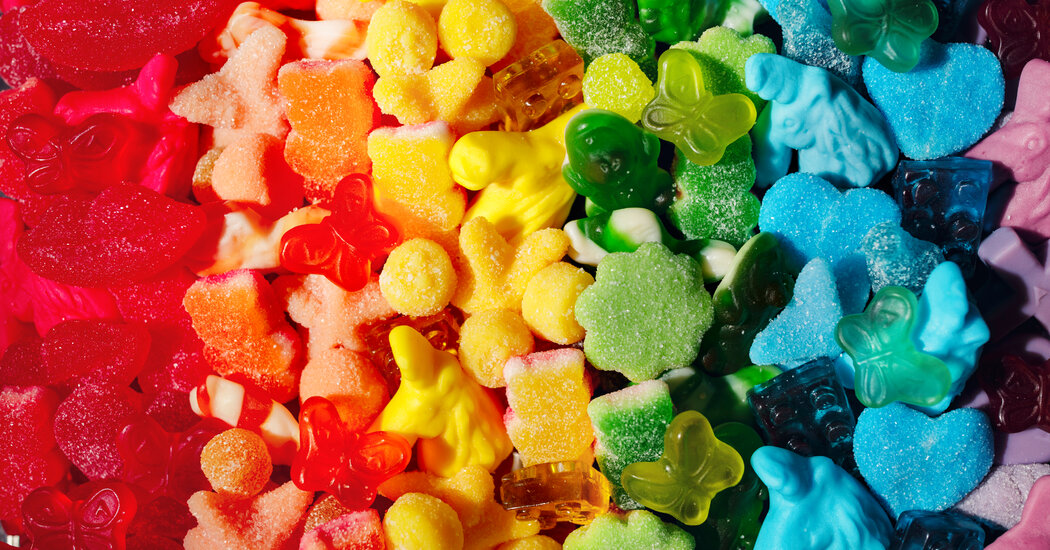
Ashley Garza recalls her teenage years in the Rio Grande Valley in Texas, when she ate commercial gummy bears in raspas, a shaved-ice dessert, and as dulces enchilados, a Mexican American snack of chamoy- and chile-coated candies. “When I was in high school, people were selling little Ziploc bags of gummy bears with chamoy,” she said.
Ms. Garza, 30, was a grocery clerk at the start of the pandemic, but facing mounting bills, she started a candy company called Texas Chile Dulceria with her boyfriend, Adrian Martinez, 28. He hand-mixes the candy, which includes sweet bears and mouth-puckering sour belts. Each batch starts with a generous drizzle of chamoy, followed by a liberal shower of tart chile seasoning.
Elizabeth Schmitt, 37, a self-professed gummy fanatic, owns the candy company Ruby Bond, in Atlanta. “Gummy candy is so nostalgic,” she said. “It reminds me of simpler times.”
She layers various shapes onto acrylic trays to make candy “charcuterie.” In one of her most popular arrangements, bears are squished alongside an ombré rainbow of stars, butterflies and other springy creatures.
She has an abundance of choices: oozy jelly-filled shapes, super-sour chews and foamy, marshmallowy creations. She leans toward the softer varieties with vivid colors.
“Not all gummy candies are created equal,” she said.
Novelty candy shops across the country and online are treasure troves for more extreme takes, from one bear that weighs in at about five pounds to a scorchingly spicy counterpart that reaches nine million units on the Scoville scale.
Jessica Stevenson, 34, owns a candy shop called Hello, Sweets with her husband, Tyler, in Tonawanda, N.Y. The couple sometimes post videos of their favorite candy to social media, spurring intense debates in the comments section over issues like the merits of a rigorous chew versus a supple one.



